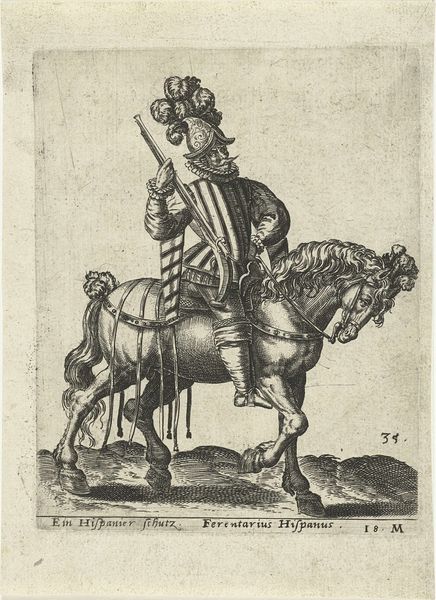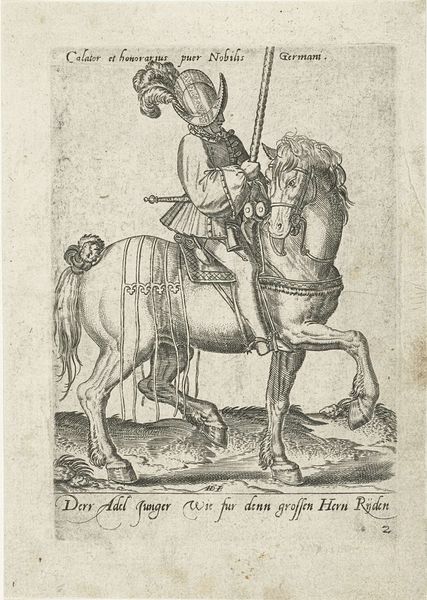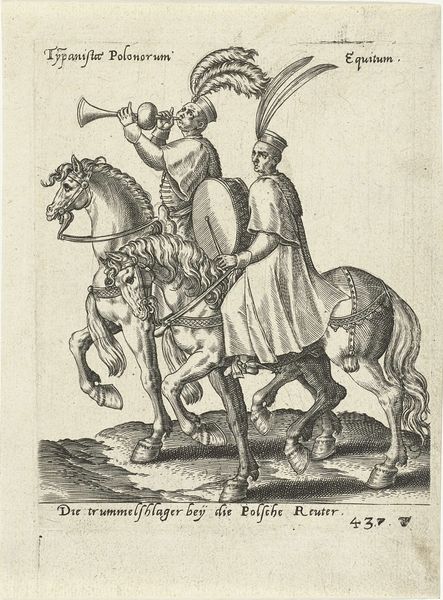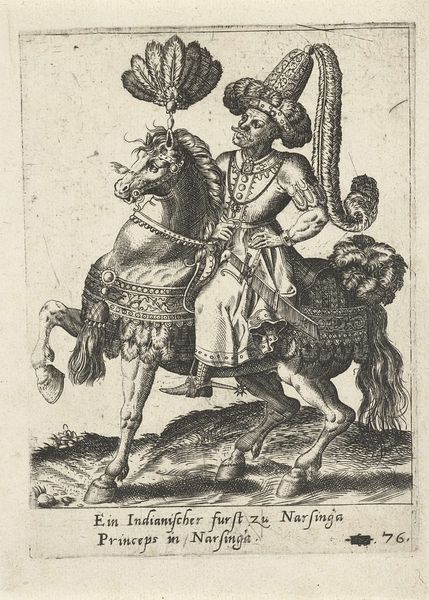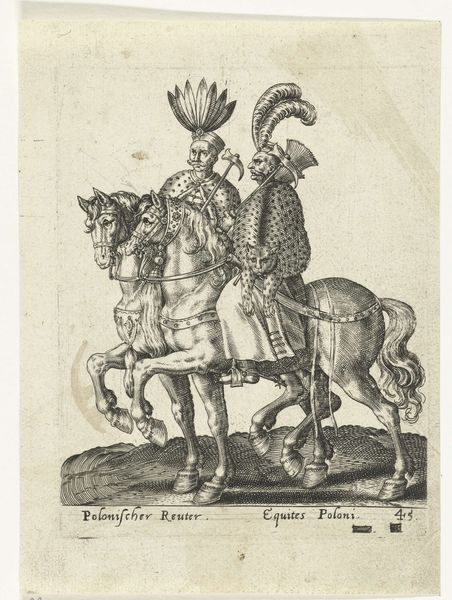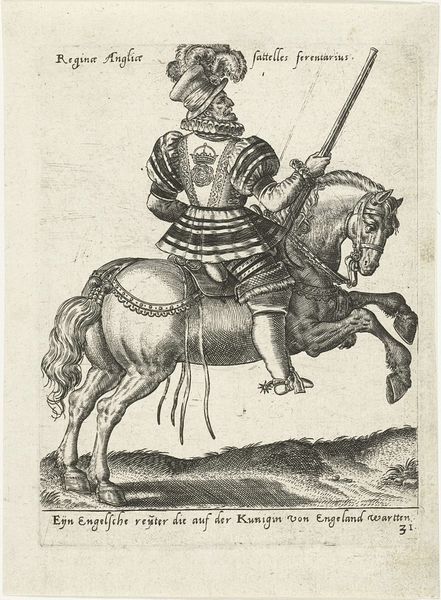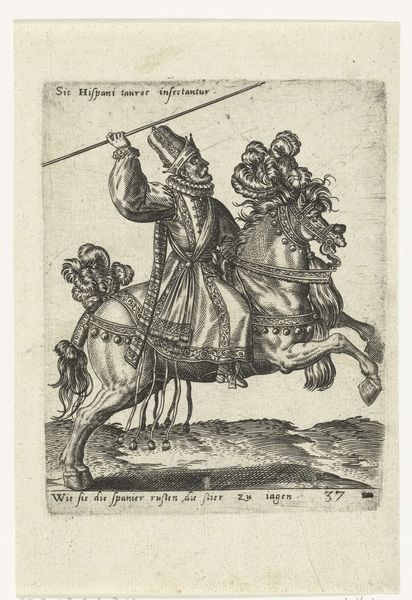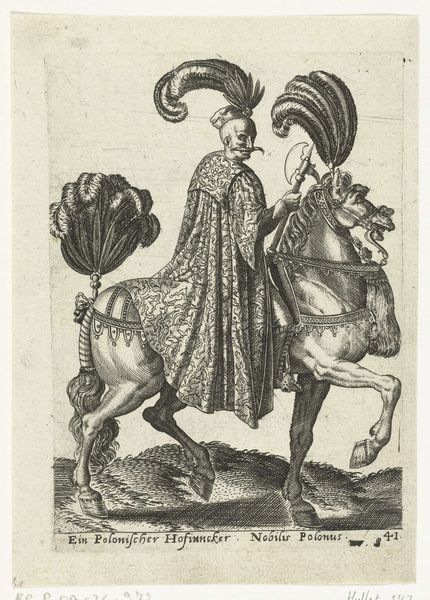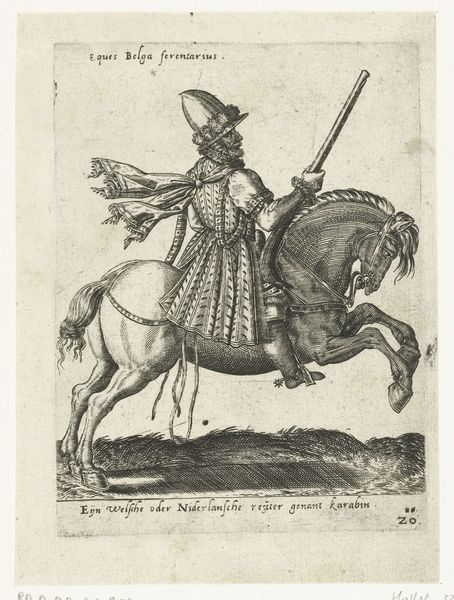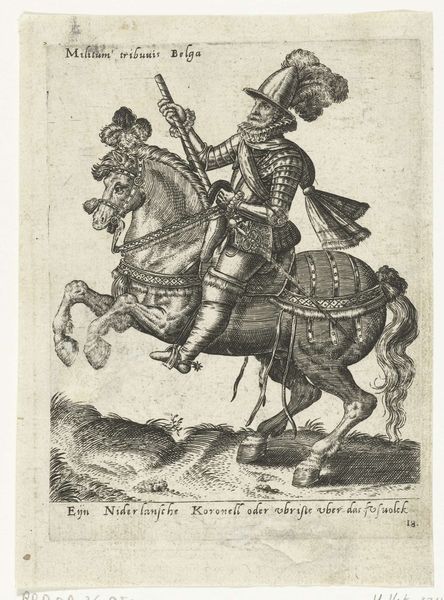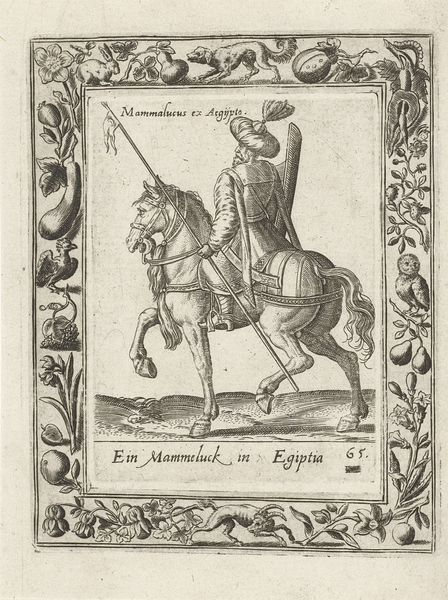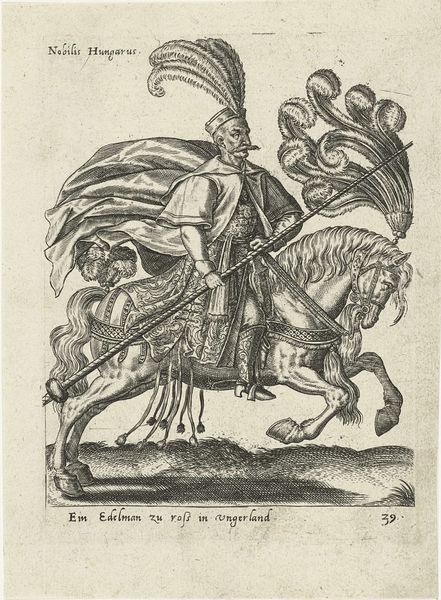
print, engraving
#
imaginative character sketch
#
quirky sketch
# print
#
pen sketch
#
sketch book
#
figuration
#
11_renaissance
#
personal sketchbook
#
sketchwork
#
pen-ink sketch
#
orientalism
#
sketchbook drawing
#
storyboard and sketchbook work
#
northern-renaissance
#
sketchbook art
#
engraving
Dimensions: height 138 mm, width 111 mm
Copyright: Rijks Museum: Open Domain
This print, “Een Ottomaanse ruiter,” was created by Abraham de Bruyn sometime in the 16th century. It is made with the intaglio printmaking process known as etching. Unlike engraving, in which lines are physically cut into a metal plate, etching uses acid to bite lines into the metal. The etcher covers a plate with a waxy ground, then draws through it with a stylus, exposing the metal beneath. The plate is then immersed in acid, which bites into the exposed lines. This is a much freer, more fluid process than engraving, and you can see that effect here, in the lively, almost frantic lines that define the rider and his horse. The print is relatively small, and would have been part of a series. The multiplication of images through printmaking was an essential part of early modern capitalism, allowing for the wide distribution of visual information. De Bruyn made many such prints, which allowed him to participate in this emerging economy. So even though the subject is an exoticized "Ottoman rider," the object itself is evidence of a new kind of global trade. We can appreciate how de Bruyn worked to build up tone and texture with varied lines, but also how this relates to the print’s wider social context and the hierarchies of labor.
Comments
No comments
Be the first to comment and join the conversation on the ultimate creative platform.
